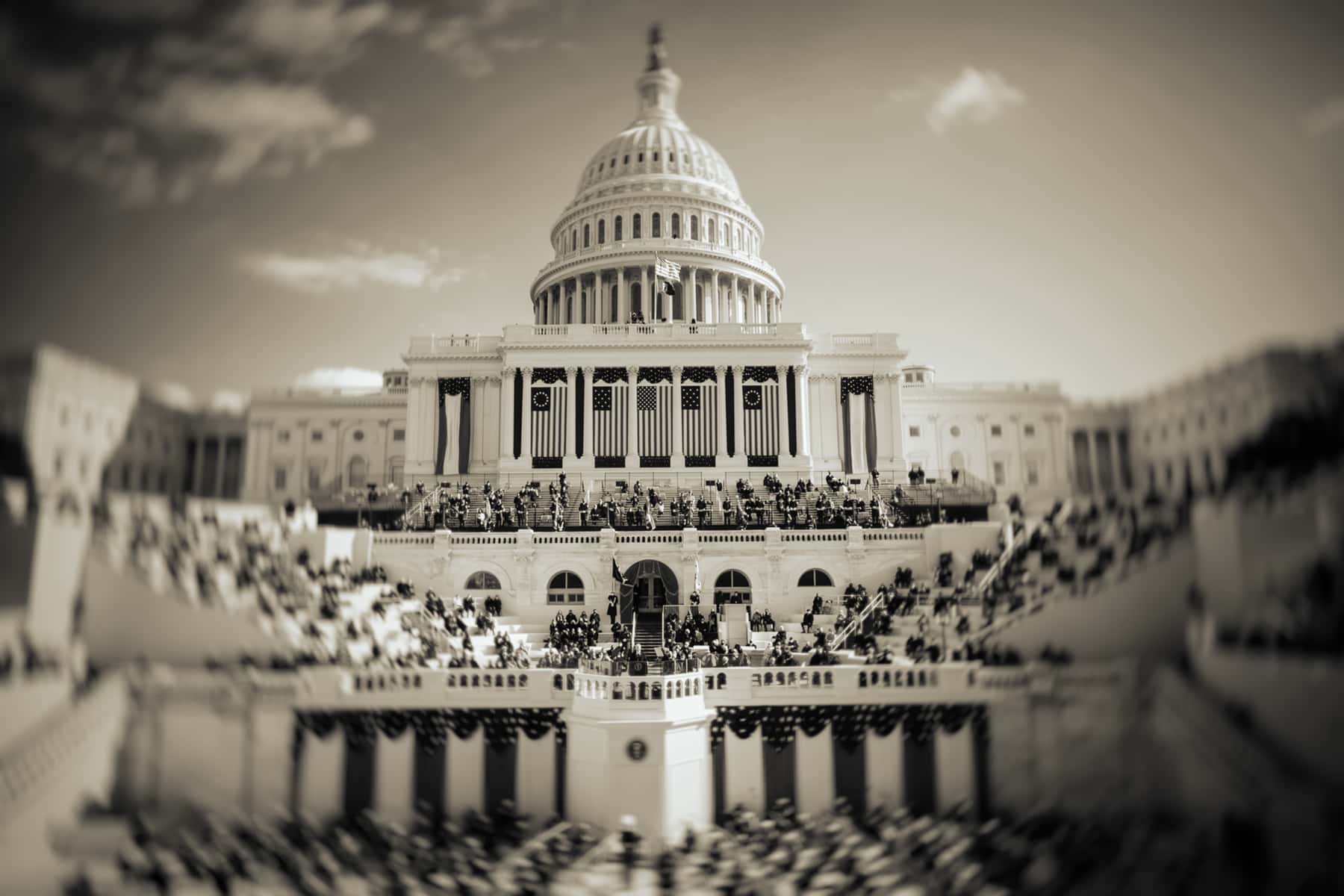
On January 6, insurrectionists trying to overturn the results of the 2020 presidential election stormed the U.S. Capitol and sent our lawmakers into hiding. Since President Joe Biden took office on January 20, just two weeks after the attack, we have been engaged in a great struggle between those trying to restore our democracy and those determined to undermine it.
Biden committed to restoring our democracy after the strains it had endured. When he took office, we were in the midst of a global pandemic whose official death toll in the U.S. was at 407,000. Our economy was in tatters, our foreign alliances weakened, and our government under siege by insurrectionists, some of whom were lawmakers themselves.
In his inaugural address, Biden implored Americans to come together to face these crises. He recalled the Civil War, the Great Depression, the World Wars, and the attacks of 9/11, noting that “[i]n each of these moments, enough of us came together to carry all of us forward.” “It’s time for boldness, for there is so much to do,” he said. He asked Americans to “write an American story of hope, not fear… [a] story that tells ages yet to come that we answered the call of history…. That democracy and hope, truth and justice, did not die on our watch but thrived.”
Later that day, he headed to the Oval Office. “I thought there’s no time to wait. Get to work immediately,” he said.
Rather than permitting the Trump Republicans who were still insisting Trump had won the election to frame the national conversation, Biden and Vice President Kamala Harris, as well as the Democrats in Congress, ignored them and set out to prove that our government can work for ordinary Americans.
Biden vowed to overcome COVID, trying to rally Republicans to join Democrats behind a “war” on the global pandemic. The Trump team had refused to confer during the transition period with the Biden team, who discovered that the previous administration had never had a plan for federal delivery of COVID vaccines, simply planning to give them to the states and then let the cash-strapped states figure out how to get them into arms. “What we’re inheriting is so much worse than we could have imagined,” Biden’s coronavirus response coordinator, Jeff Zients, said to reporters on January 21.
Biden immediately invoked the Defense Production Act, bought more vaccines, worked with states to establish vaccine sites and transportation to them, and established vaccine centers in pharmacies across the country. As vaccination rates climbed, he vowed to make sure that 70% of the U.S. adult population would have one vaccine shot and 160 million U.S. adults would be fully vaccinated by July 4th.
At the same time, the Democrats undertook to repair the economy, badly damaged by the pandemic. In March, without a single Republican vote, they passed the $1.9 trillion American Rescue Plan to jump-start the economy by putting money into the pockets of ordinary Americans. It worked. The new law cut child poverty in half by putting $66 billion into 36 million households. It expanded access to the Affordable Care Act, enabling more than 4.6 million Americans who were not previously insured to get healthcare coverage, bringing the total covered to a record 13.6 million.
As vaccinated people started to venture out again, this support for consumers bolstered U.S. companies, which by the end of the year were showing profit margins higher than they have been since 1950, at 15%. Companies reduced their debt, which translated to a strong stock market. In February, Biden’s first month in office, the jobless rate was 6.2%; by December it had dropped to 4.2%. This means that 4.1 million jobs were created in the Biden administration’s first year, more than were created in the 12 years of the Trump and George W. Bush administrations combined.
In November, Congress passed a $1.2 trillion infrastructure bill that will repair bridges and roads and get broadband to places that still don’t have it, and negotiations continue on a larger infrastructure package that will support child care and elder care, as well as education and measures to address climate change.
Bloomberg and the Wall Street Journal report that U.S. economic output jumped more than 7% in the last three months of 2021. Overall growth for 2021 should be about 6%, and economists predict growth of around 4% in 2022—the highest numbers the U.S. has seen in decades. China’s growth in the same period will be 4%, and the eurozone (the member countries of the European Union that use the euro) will grow at 2%. The U.S. is “outperforming the world by the biggest margin in the 21st century,” wrote Matthew A. Winkler in Bloomberg, “and with good reason: America’s economy improved more in Joe Biden’s first 12 months than any president during the past 50 years….”
With more experience in foreign affairs than any president since George H. W. Bush, Biden set out to rebuild our strained alliances and modernize the war on terror. On January 20, he took steps to rejoin the World Health Organization and the Paris Climate Accords, which his predecessor had rejected. Secretary of State Antony Blinken emphasized that Biden’s leadership team believed foreign and domestic policy to be profoundly linked. They promised to support democracy at home and abroad to combat the authoritarianism rising around the world.
“The more we and other democracies can show the world that we can deliver, not only for our people, but also for each other, the more we can refute the lie that authoritarian countries love to tell, that theirs is the better way to meet people’s fundamental needs and hopes. It’s on us to prove them wrong,” Blinken said.
Biden and Blinken increased the use of sanctions against those suspected of funding terrorism. Declaring it vital to national security to stop corruption in order to prevent illicit money from undermining democracies, Biden convened a Summit for Democracy, where leaders from more than 110 countries discussed how best to combat authoritarianism and corruption, and to protect human rights.
Biden began to shift American foreign policy most noticeably by withdrawing from the nation’s twenty-year war in Afghanistan. He inherited the previous president’s February 2020 deal with the Taliban to withdraw U.S. forces from Afghanistan by May 1, 2021, so long as the Taliban did not kill any more Americans. By the time Biden took office, the U.S. had withdrawn all but 2500 troops from the country.
He could either go back on Trump’s agreement—meaning the Taliban would again begin attacking U.S. service people, forcing the U.S. to pour in troops and sustain casualties—or get out of what had become a meandering, expensive, unpopular war, one that Biden himself had wanted to leave since the Obama administration.
In April, Biden said he would honor the agreement he had inherited from Trump, beginning, not ending, the troop withdrawal on May 1. He said he would have everyone out by September 11, the 20th anniversary of the al-Qaeda attacks that took us there in the first place. (He later adjusted that to August 31.) He promised to evacuate the country “responsibly, deliberately, and safely” and assured Americans that the U.S. had “trained and equipped a standing force of over 300,000 Afghan personnel” who would “continue to fight valiantly, on behalf of the Afghans, at great cost.”
Instead, the Afghan army crumbled as the U.S began to pull its remaining troops out in July. By mid-August, the Taliban had taken control of the capital, Kabul, and the leaders of the Afghan government fled, abandoning the country to chaos. People rushed to the airport to escape and seven Afghans died, either crushed in the crowds or killed when they fell from planes to which they had clung in hopes of getting out. Then, on August 26, two explosions outside the Kabul airport killed at least 60 Afghan civilians and 13 U.S. troops. More than 100 Afghans and 15 U.S. service members were wounded.
In the aftermath, the U.S. military conducted the largest human airlift in U.S. history, moving more than 100,000 people without further casualties, and on August 30, Major General Chris Donahue, commander of the U.S. Army 82nd Airborne Division, boarded a cargo plane at Kabul airport, and the U.S. war in Afghanistan was over.
With the end of that war, Biden has focused on using financial pressure and alliances rather than military might to achieve foreign policy goals. He has worked with North Atlantic Treaty Organization (NATO) allies to counter increasing aggression from Russian president Vladimir Putin, strengthening NATO, while suggesting publicly that further Russian incursions into Ukraine will have serious financial repercussions.
In any ordinary time, Biden’s demonstration that democracy can work for ordinary people in three major areas would have been an astonishing success. But these are not ordinary times.
Biden and the Democrats have had to face an opposition that is working to undermine the government. Even after the January 6 attack on the Capitol, 147 Republican members of Congress voted to challenge at least one of the certified state electoral votes, propping up the Big Lie that Trump won the 2020 presidential election. Many of them continue to plug that lie, convincing 68% of Republicans that Biden is an illegitimate president.
This lie has justified the passage in 19 Republican-dominated states of 33 new laws to suppress voting or to take the counting of votes out of the hands of non-partisan officials altogether and turn that process over to Republicans.
Republicans have stoked opposition to the Democrats by feeding the culture wars, skipping negotiations on the American Rescue Plan, for example, to complain that the toymaker Hasbro was introducing a gender-neutral Potato Head toy, and that the estate of Dr. Seuss was ceasing publication of some of his lesser-known books that bore racist pictures or themes. They created a firestorm over Critical Race Theory, an advanced legal theory, insisting that it, and the teaching of issues of race in the schools, was teaching white children to hate themselves.
Most notably, though, as Biden’s coronavirus vaccination program appeared to be meeting his ambitious goals, Republicans suggested that government vaccine outreach was overreach, pushing the government into people’s lives. Vaccination rates began to drop off, and Biden’s July 4 goal went unmet just as the more contagious Delta variant began to rage across the country.
In July, Biden required federal workers and contractors to be vaccinated; in November, the administration said that workers at businesses with more than 100 employees and health care workers must be vaccinated or frequently tested.
Rejecting the vaccine became a badge of opposition to the Biden administration. By early December, fewer than 10% of adult Democrats were unvaccinated, compared with 40% of Republicans. This means that Republicans are three times more likely than Democrats to die of COVID, and as the new Omicron variant rages across the country, Republicans are blaming Biden for not stopping the pandemic. COVID has now killed more than 800,000 Americans.
While Biden and the Democrats have made many missteps this year—missing that the Afghan government would collapse, hitting an Afghan family in a drone strike, underplaying COVID testing, prioritizing infrastructure over voting rights—the Democrats’ biggest miscalculation might well be refusing to address the disinformation of the Republicans directly in order to promote bipartisanship and move the country forward together.
With the lies of Trump Republicans largely unchallenged by Democratic lawmakers or the media, Republicans have swung almost entirely into the Trump camp. The former president has worked to purge from the state and national party anyone he considers insufficiently loyal to him, and his closest supporters have become so extreme that they are openly supporting authoritarianism and talking of Democrats as “vermin.”
Some are talking about a “national divorce,” which observers have interpreted as a call for secession, like the Confederates tried in 1860. But in fact, Trump Republicans do not want to form their own country. Rather, they want to cement minority rule in this one, keeping themselves in power over the will of the majority.
It some ways we ended 2021 as we began it. Although Biden and the Democrats demonstrated that our government, properly run, can work for the people to combat a deadly pandemic, create a booming economy, and stop unpopular wars, that same authoritarian minority that tried to overturn the 2020 election on January 6 is more deeply entrenched than it was a year ago.
And yet, as we move into 2022, the ground is shifting. The House Select Committee to Investigate the January 6th Attack on the U.S. Capitol is starting to show what it has learned from the testimony of more than 300 witnesses and a review of more than 35,000 documents. The fact that those closest to Trump are refusing to testify suggests that the hearings in the new year will be compelling and will help people to understand just how close we came to an authoritarian takeover last January.
The Senate is taking up measures to restore the voting rights and election integrity Republican legislatures have stripped away, giving back to the people the power to guard against such an authoritarian coup happening again.
It looks like 2022 is going to be a choppy ride, but its outcome is in our hands. As Congressman John Lewis (D-GA), who was beaten almost to death in his quest to protect the right to vote, wrote to us when he passed: “Democracy is not a state. It is an act, and each generation must do its part.”
Chuck Kеnnеdy and Pаtrіck Sеmаnsky / Pool
Letters from an Аmerican is a daily email newsletter written by Heather Cox Richardson, about the history behind today’s politics















